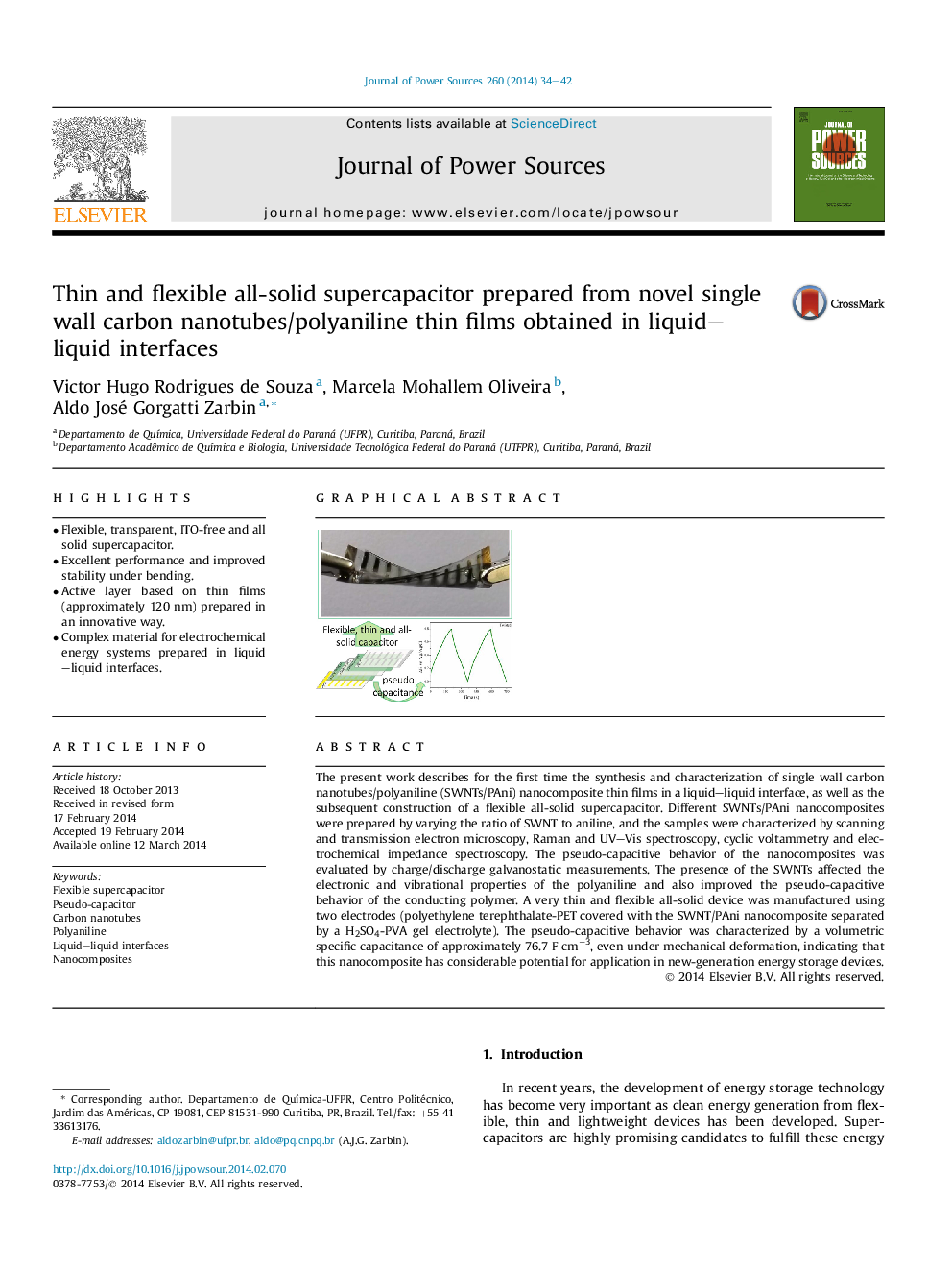| Article ID | Journal | Published Year | Pages | File Type |
|---|---|---|---|---|
| 1284165 | Journal of Power Sources | 2014 | 9 Pages |
•Flexible, transparent, ITO-free and all solid supercapacitor.•Excellent performance and improved stability under bending.•Active layer based on thin films (approximately 120 nm) prepared in an innovative way.•Complex material for electrochemical energy systems prepared in liquid–liquid interfaces.
The present work describes for the first time the synthesis and characterization of single wall carbon nanotubes/polyaniline (SWNTs/PAni) nanocomposite thin films in a liquid–liquid interface, as well as the subsequent construction of a flexible all-solid supercapacitor. Different SWNTs/PAni nanocomposites were prepared by varying the ratio of SWNT to aniline, and the samples were characterized by scanning and transmission electron microscopy, Raman and UV–Vis spectroscopy, cyclic voltammetry and electrochemical impedance spectroscopy. The pseudo-capacitive behavior of the nanocomposites was evaluated by charge/discharge galvanostatic measurements. The presence of the SWNTs affected the electronic and vibrational properties of the polyaniline and also improved the pseudo-capacitive behavior of the conducting polymer. A very thin and flexible all-solid device was manufactured using two electrodes (polyethylene terephthalate-PET covered with the SWNT/PAni nanocomposite separated by a H2SO4-PVA gel electrolyte). The pseudo-capacitive behavior was characterized by a volumetric specific capacitance of approximately 76.7 F cm−3, even under mechanical deformation, indicating that this nanocomposite has considerable potential for application in new-generation energy storage devices.
Graphical abstractFigure optionsDownload full-size imageDownload as PowerPoint slide
